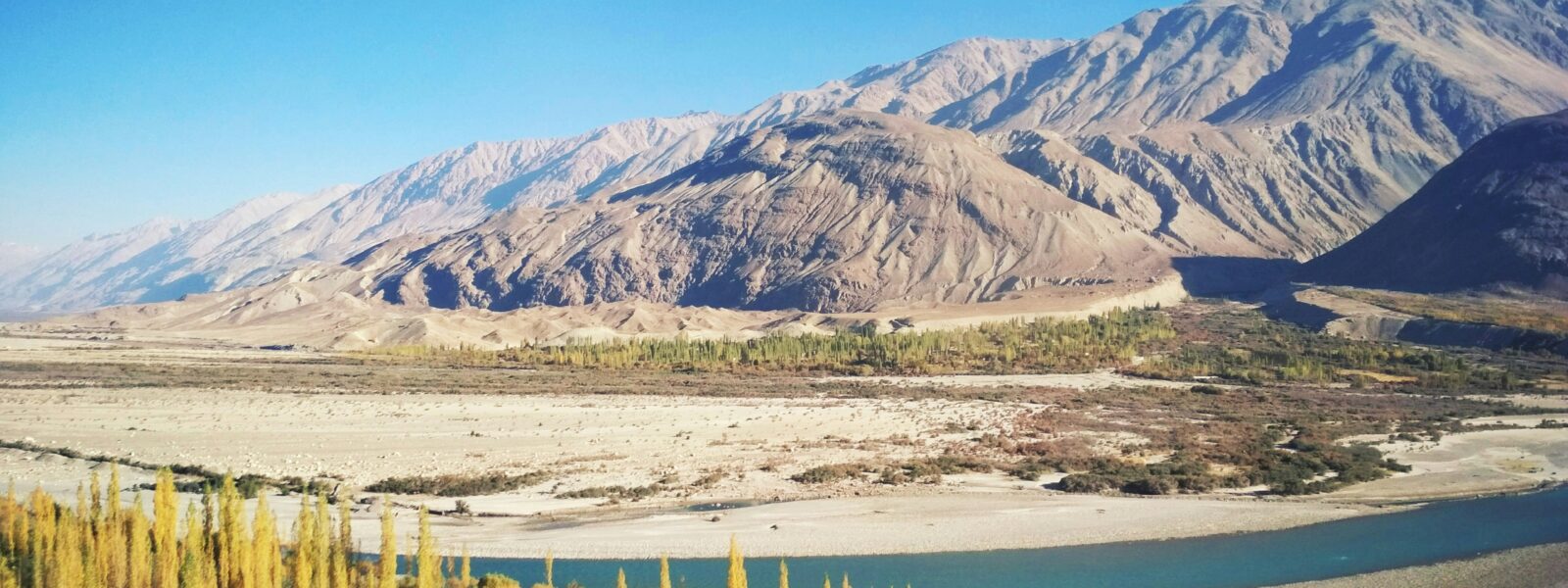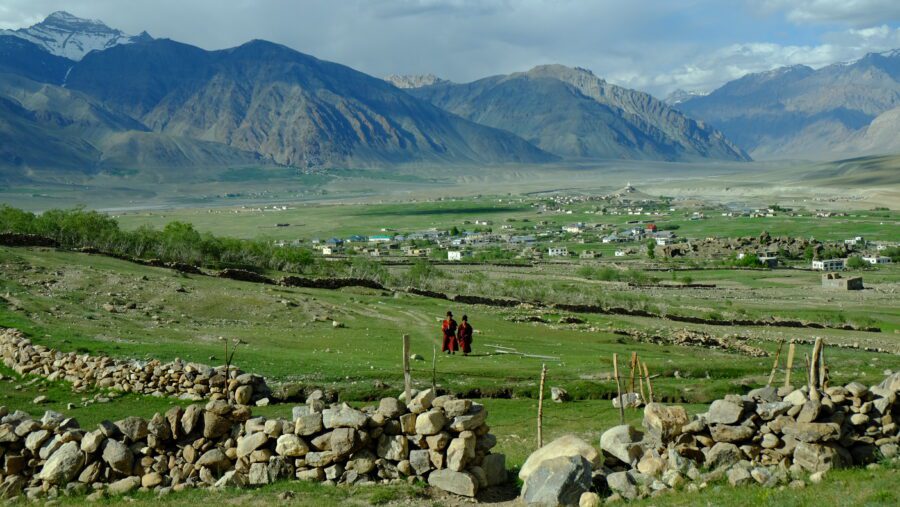Where Stones Remember Ladakh: Joy of Hidden Trails
By Elena Marlowe
Before the Light — Setting Out with Tashi Anchok
The Valley Wakes in Fragments of Blue
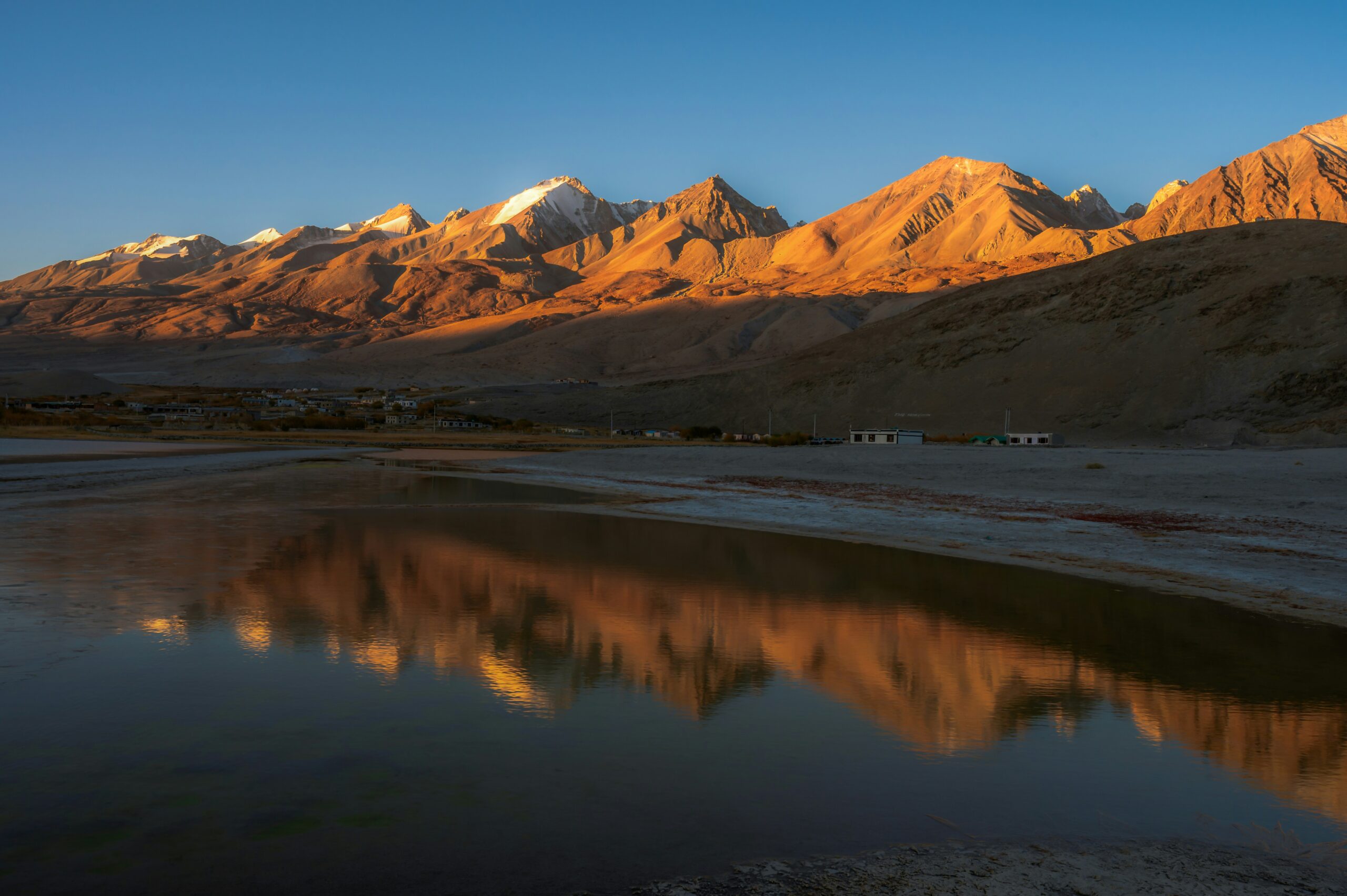
The morning begins before sight. A faint ripple of sound — a goat’s bell, a cough from a distant courtyard — drifts through the thin air of Chiktan. Frost clings to the grass in narrow lanes. The mountains wait in still shadow. Tashi Anchok steps out from the doorway, the folds of his woolen robe brushing against a wooden frame worn smooth by decades. He nods once, as if to no one, and starts walking. The earth crunches lightly beneath his boots. No words follow. The path is narrow and lined with stones piled to mark forgotten fields. Far behind, the village dogs answer the call of another day.
In this land, where stones remember ladakh, every step tells a story.
A stream follows their path. It moves without rush, tracing the edge of barley terraces where dry stalks bend toward water. The color of dawn — neither gray nor gold — spills across the plain. Tashi lifts a small bundle from his shoulder and places it on a low wall. Inside, a flask of butter tea and a folded scarf. He pours two cups but keeps walking as steam rises. The air smells faintly of juniper and cold metal. The wind is not strong enough yet to move the prayer flags. It only grazes their edges, making them whisper against the bamboo poles.
The Road to the Forgotten Waterway
The track bends toward a cluster of stones that once formed a canal. Tashi crouches beside them, brushing dust away with his palm. He doesn’t speak. His hand rests on a carved edge, a half-circle smoothed by centuries of water. The channel no longer runs — the river shifted its course years ago. A few tufts of grass grow in the dry groove. Somewhere, a child’s laughter floats from the village behind them. A yak bell chimes like a misplaced clock. Tashi lifts a pebble and places it carefully on top of the wall. Then another. The gesture seems to close a circle.
They continue uphill, the sky widening with every turn. A solitary poplar stands ahead, its trunk painted with a white stripe at the base. Beneath it, a small figure carved from stone sits against the earth — a seated Buddha, no taller than a hand. The lines of its face are nearly gone. Tashi stops, bowing his head. The wind lifts his hair slightly, then settles. The silence afterward feels shaped, like pottery cooled by breath.
Where Stones Remember — Unspoken Stories of the Valley
The Wall Beside the Stream
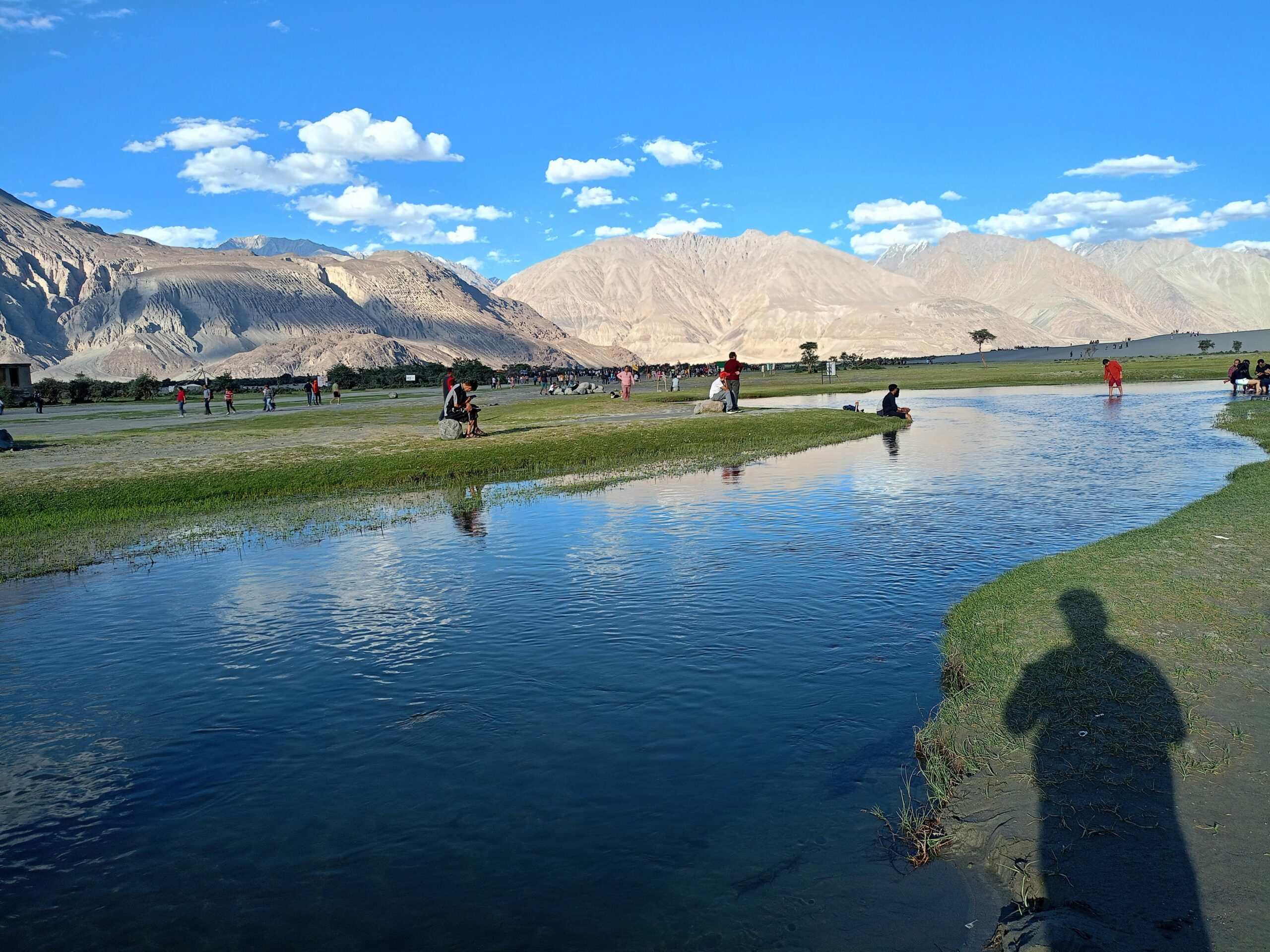
The path narrows again, leading toward a wall of stacked river stones. Each one bears a faint script — the curling letters of old mantras that no one reads now. The stream hums nearby, its tone rising with each curve. Moss glows in the crevices where sunlight touches briefly before moving on. Tashi traces one line of carving with his thumb. His nail gathers a little dust. He doesn’t clean it away. Instead, he presses his hand flat against the rock, as if testing its pulse. The sound of the stream deepens, echoing off the stones, blending into the rhythm of breathing and walking.
Two women appear on the path, carrying baskets of fodder on their backs. They smile without stopping, the straps cutting into their shoulders. Tashi steps aside, allowing them to pass. One of them drops a single stalk of grass. He picks it up and places it on the nearest stone, a small exchange unnoticed by anyone but the wind. The water beside the path thickens with mud and light. Reflections of prayer flags shimmer and break apart like colored smoke.
The House of Quiet Voices
Beyond the wall, the track opens into a clearing. A single mud house stands there, roof lined with stones to keep it from lifting in the wind. Smoke leaks from a vent near the top. A wooden door swings on a loose hinge. Inside, a woman kneads dough on a low table, her wrists powdered with flour. She glances up, nods at Tashi, then continues. No words pass. The dough squeaks beneath her palms. A kettle hums on the stove. Outside, Tashi adjusts a prayer wheel nailed to the doorframe; its copper surface turns once, catching the early light, then stops. The scent of burning barley fills the air, warm and faintly sweet.
They sit by the doorway. The woman brings them two bowls of butter tea, thick and slightly salty. Tashi drinks, sets the bowl down, and gestures toward the mountains. She laughs quietly, the sound brief as breath. A crow lands nearby, tilting its head toward them, watching. When they stand to leave, the woman wipes her hands on her apron and offers them a round of bread wrapped in cloth. Tashi takes it without thanks — or perhaps that gesture itself is thanks. They walk on.
The Art of Walking Without Destination
The Unmarked Trail
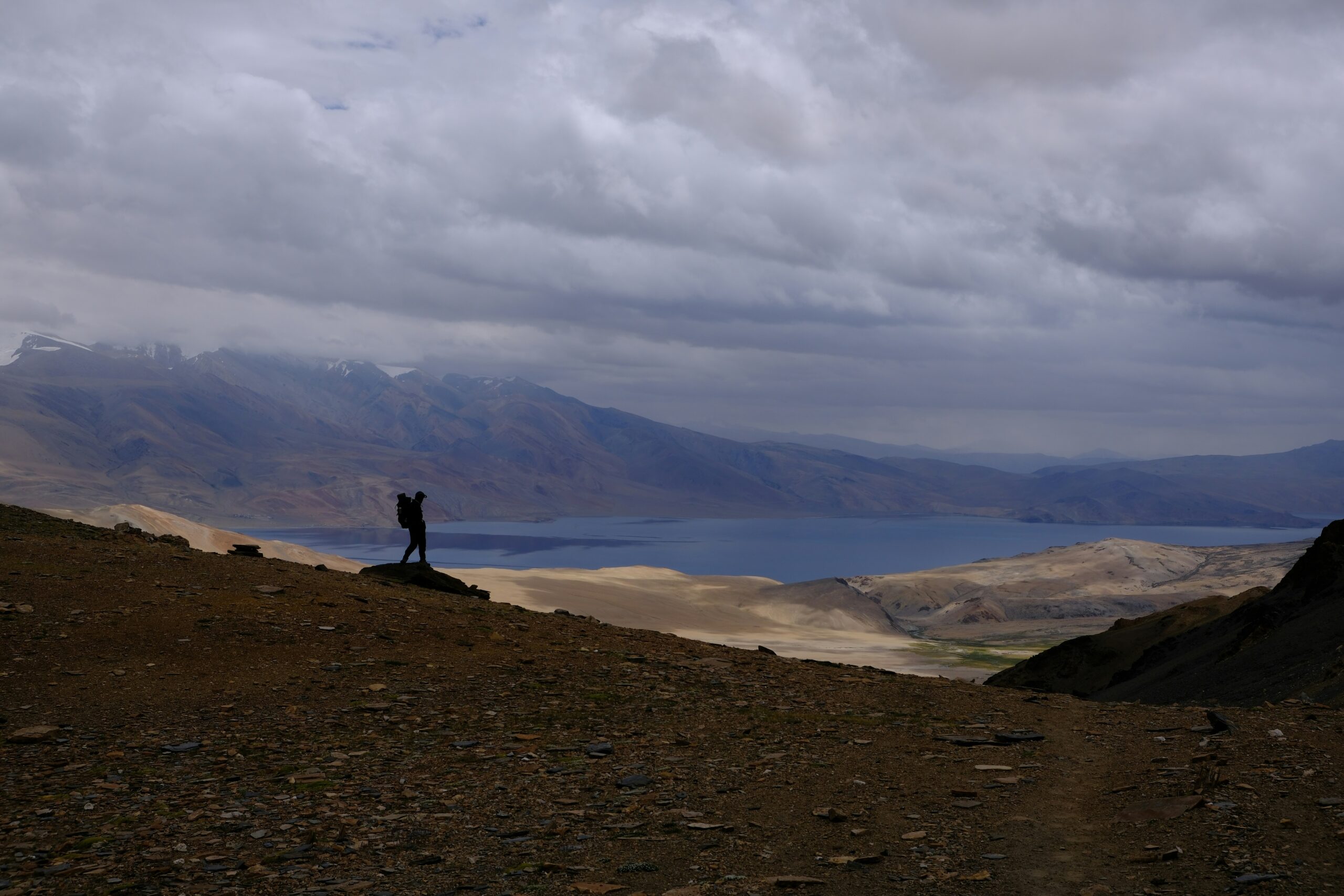
The path now disappears into the folds of rock. There are no signs, no boundary stones. Only the memory of where others once passed. Tashi walks ahead, steps light, the pace constant. The air here carries a dry hum, the vibration of unseen insects. At the turn of a ridge, a patch of ice glints beneath the dust. The landscape feels suspended between seasons. Frost clings to shadowed corners while the sun paints warmth across open ground. Each step alters the temperature of the air.
A shepherd approaches, driving a few goats along a slope. The animals move around the travelers like small shadows. The shepherd raises a hand in greeting, then continues down. His voice carries after him — a short song, half prayer, half rhythm for walking. Tashi listens without turning. When the sound fades, only the echo of boots remains. They stop beside a cairn — a small pile of rocks topped with a fragment of cloth. The fabric flutters once, the color faded to ash. Tashi straightens one of the stones, adjusting its balance. He looks up at the sky, pale and unending. The air trembles slightly with height.
The Weight of Small Distances
Every turn seems both near and far. The rhythm of walking changes with terrain: gravel underfoot, loose dust, sudden firmness of clay. The body adjusts without command. There is no conversation — only small gestures between them: a nod toward a fork in the trail, a pause before a steep slope, a glance toward clouds gathering in the distance. Time unfolds by the rhythm of steps. Shadows move across the ridges like silent sails.
At one point, Tashi kneels beside a stone etched with thin red lines. He wipes the surface gently with his sleeve. It reveals the shape of a wheel — or perhaps it is just the mark of rain. Either way, he nods slightly, satisfied, and continues. The trail widens again, leading toward a grove of willows. Their leaves rustle like paper. Light filters through them, gold and green. The sound of a faraway river returns, faint but certain.
When the Morning Turns to Light
The Ridge Above the Valley
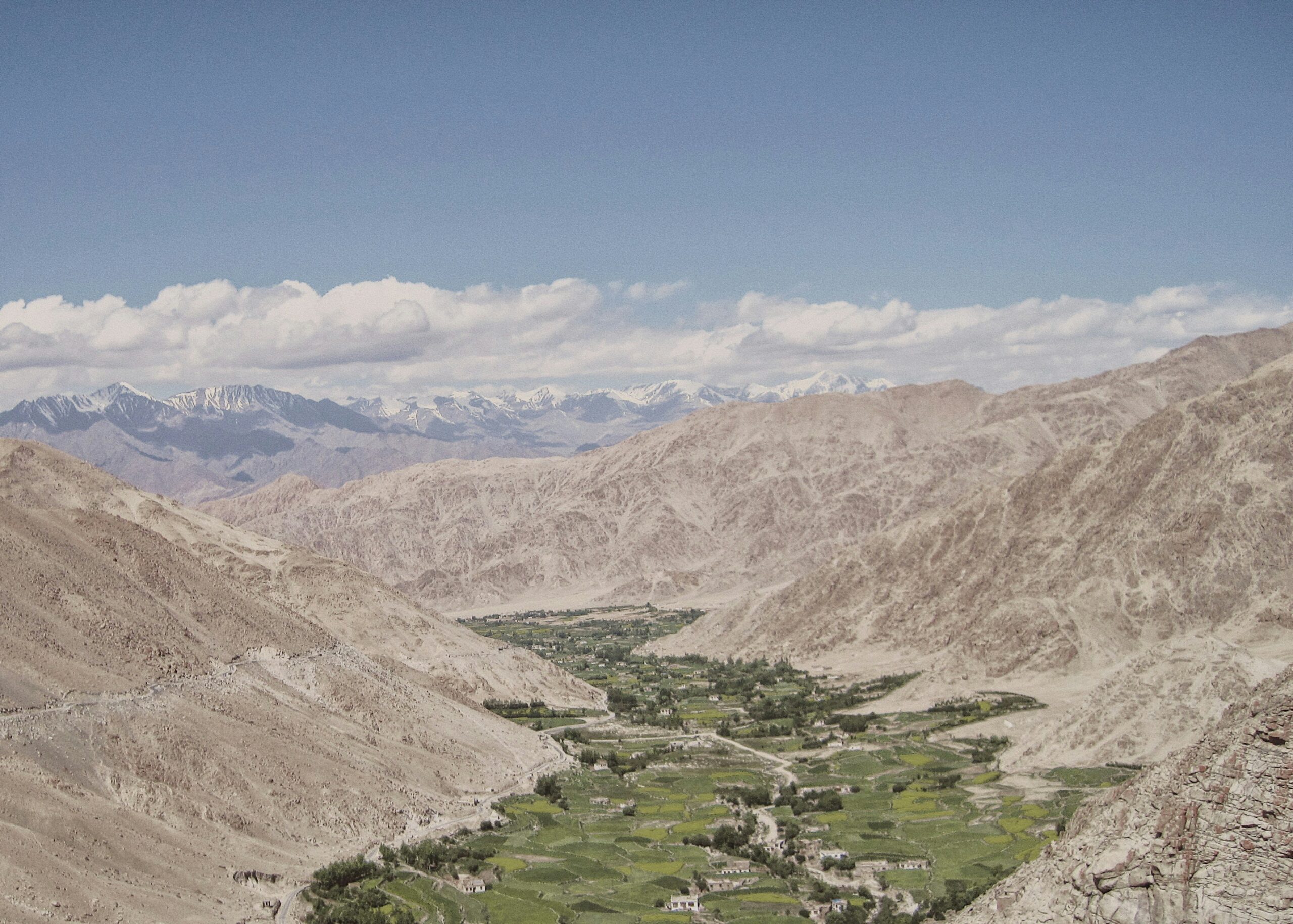
From the top, the entire valley opens like an unfolding map. The fields below are patterns of pale green and brown. Thin lines of irrigation shimmer under sunlight. The houses, scattered like white pebbles, catch the reflection of the river. Tashi sets down his bundle, removes the bread the woman gave earlier, and breaks it in half. They eat slowly, the crust soft from warmth. No words pass. The wind presses against their faces, cold and dry, tasting of snow.
A raven circles above them once, twice, then drifts toward the ridge. The sound of its wings blends with the whistle of air through stones. Below, a man leads two donkeys across a shallow stream, the animals leaving brief mirrors of water behind. The light grows stronger, filling the spaces between rocks and trees. Every surface begins to glow. Tashi closes his eyes for a moment, then opens them again. He brushes crumbs from his robe and stands. The morning has completed itself.
The Descent
Going down, the shadows shorten. The stones that were cold now radiate stored heat. Dust rises in thin spirals from their steps. The village reappears — small squares of white walls, the sound of children, the clang of metal against stone. Smoke climbs from roofs in lazy columns. At the edge of the field, Tashi stops. He picks a small tuft of grass and ties it to a wooden stake by the path. Then he walks on. The wind catches the blades of grass and makes them tremble like a bell.
The path levels at the base of the hill. A group of monks pass them, robes moving like fire in slow motion. One of them nods. Another hums under his breath. The air smells of burnt juniper. Tashi’s pace slows as they near the gate. A dog waits there, tail flicking, neither friendly nor wary. It moves aside when they pass. The light on the ground shifts from white to amber, softening the edges of everything it touches.
Reflections Written by the Landscape
The Village Returns
Back among houses, the noise of the world resumes — metal pots clanging, goats bleating, children chasing each other through dust. Tashi sets his bundle down beside a wall and opens it. Inside, the empty flask and the folded scarf. He shakes out the scarf, hangs it on a nail by the doorway, and steps inside. Elena remains outside for a moment. The wall is warm where sunlight touches. Somewhere behind the mountains, thunder rolls faintly though the sky above stays clear. A woman pours water into a trough. The sound is small and steady, the rhythm unchanged.
Near the gate, a child drops a pebble into the canal. The ripple widens, breaks against a stone, and fades. The stone remains. Wind carries the scent of earth after frost, of smoke and milk and dust. The valley holds its breath again — a pause between footsteps, between hours. Nothing more is said. Everything continues.
“The day knows the rest,” Tashi had said before. Perhaps he was right. The stones remember enough.
FAQ — About the Journey
What is the location of this walk?
This walk takes place near Chiktan in Ladakh, India — a remote valley surrounded by ancient villages and untouched landscapes, far from the usual tourist routes.
Who is Tashi Anchok?
Tashi Anchok is a local Ladakhi guide known for leading quiet walks through lesser-known paths, focusing on heritage, ecology, and the silent stories held by the land itself.
When is the best time to experience such a morning walk in Ladakh?
The ideal time is from late May to early October, when mornings are clear, rivers gentle, and the mountain light transforms the landscape in subtle, breathtaking ways.
What makes this walk different from other treks in Ladakh?
It avoids high-altitude summits and focuses instead on rhythm, silence, and connection — discovering small details, forgotten paths, and the gentle gestures of daily life.
How can travelers practice responsible tourism in Ladakh?
By respecting local rhythms, minimizing waste, supporting homestays and guides like Tashi Anchok, and walking with awareness rather than speed, travelers honor both people and place.
Conclusion — The Path Beneath Words
The walk ends where it began, yet nothing feels the same. Light has shifted, dust has settled, and footprints now mark the memory of the trail. In Ladakh, walking is not an act of reaching but of returning — returning to the pace of the earth, to the dialogue of wind and stone. The valley remains, breathing slowly, holding its own stories in silence. Perhaps travel, in its truest form, is this: to walk through a place without disturbing its quiet understanding.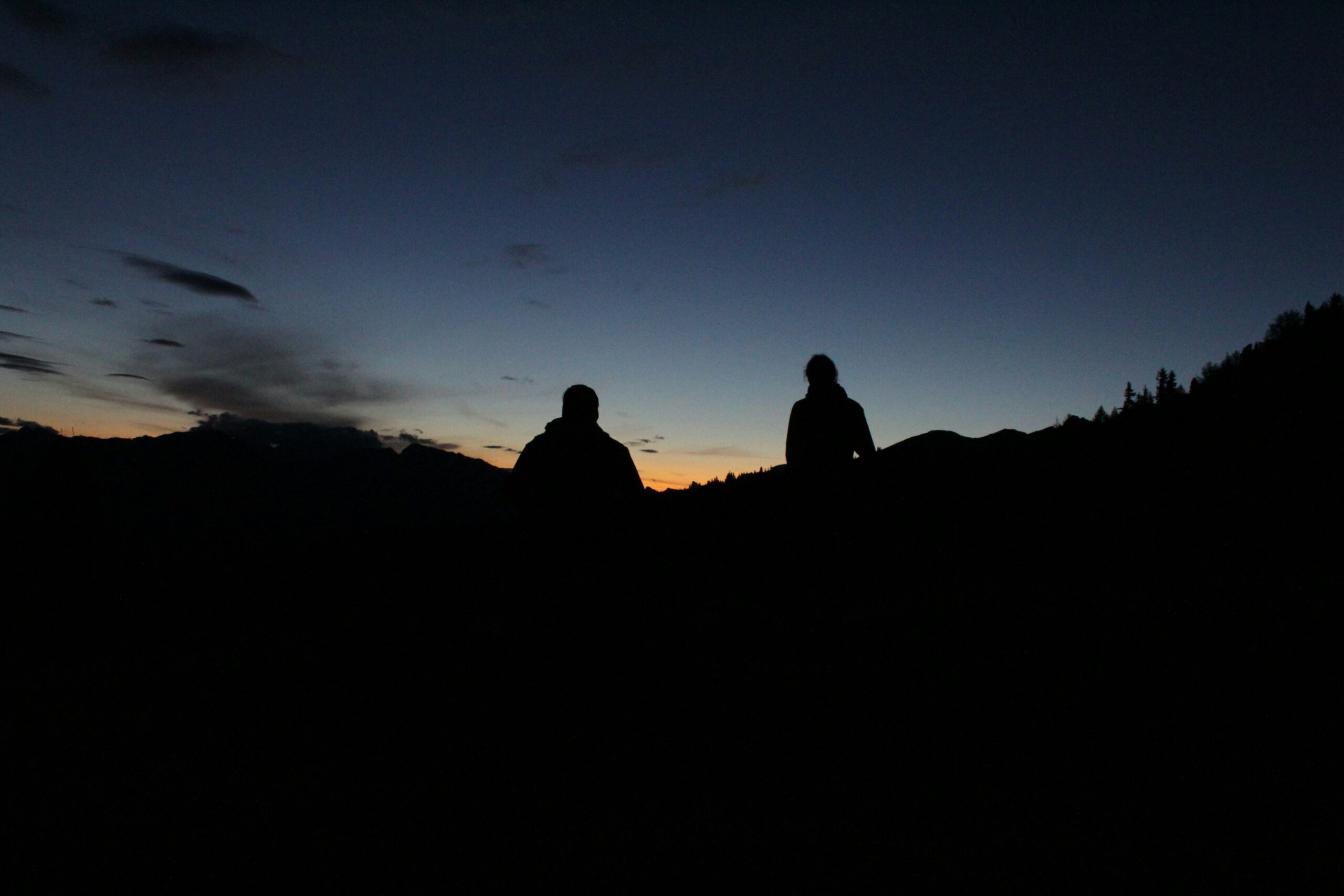
Closing Note
The next traveler who follows Tashi’s path may not find the same stones or hear the same bells. Yet the rhythm will remain — the hush of dawn, the sound of boots against frost, the gentle motion of the world beginning again. Somewhere between the first step and the last, the silence will speak for itself.
About the Author
Elena Marlowe is an Irish-born writer living in a quiet village near Lake Bled, Slovenia.
Her work blends observation and stillness, tracing the quiet language of landscapes through travel, craft, and the passage of light.
Between journeys, she edits her notes by the lake, shaping elegant reflections that invite readers to wander slowly and see deeply.

